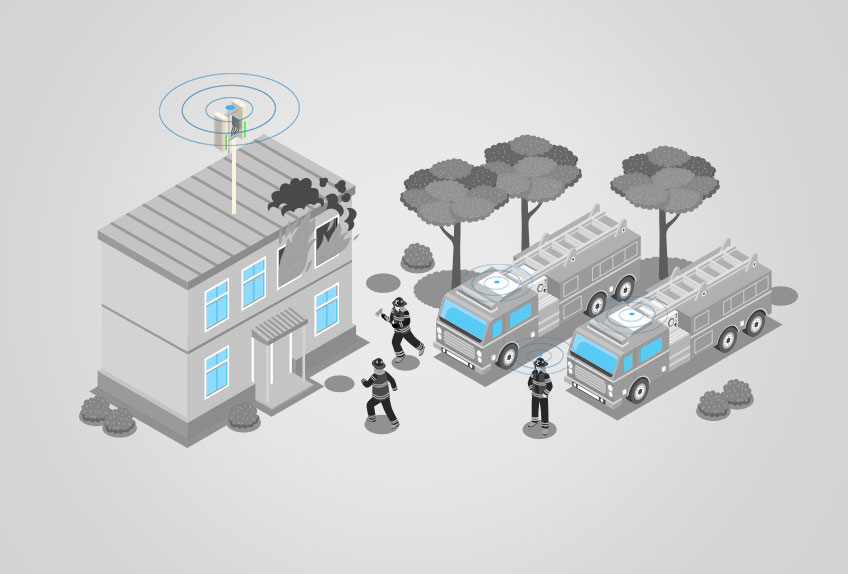What is in-building public safety?
Public safety networks are specialized wireless communication systems reserved for first responders in case of any emergency. These networks are designed in a way to allow first responders uninterrupted communications to stay connected during public crisis situations. While there are no official design guidelines regarding public safety wireless, the NFPA (National Fire Protection Act) and the IFC (International Fire Code) have laid down guidelines that are mostly followed by municipalities. The exact specifications of the guidelines vary between the NFPA and IFC, however, they have specifications around minimum signal strength limit, a specific level of power back up, water protection, cable protection, testing requirements, and procedures to name a few.
What is the use of In-building Public Safety communication systems?
In-building public safety communication systems are required as public safety agencies are increasingly relying on mobile broadband and cellular networks for maintaining contact and coordination during emergencies. In-building public safety wireless is a form of Distributed Antenna Systems (DAS) and the basic operations remain the same. In-building public safety wireless objective is to give the first responders coverage, capacity, security, and quality to effectively communicate. They do so by amplifying radio signals within the building premises without breaking quality.
Buildings are made of diverse building materials which restrict the cellular signals from entering the buildings, which during a situation of emergency becomes a big hindrance in maintaining the safety of the occupants. In-building wireless ensures that the communication channels are equipped to maintain the communication between the first responders and the other agencies.
Difference between public safety and cellular networks
There are quite a few differences when it comes to the designing and implementation of in-building public safety wireless vis-a-vis a cellular network.
- Exclusivity: Public safety networks need to be exclusive and accessible at all times between first responders and other agency officials. These channels are strictly for first responders’ use and remain inaccessible to the public.
- Necessary requisite: Building owners must meet the public safety requirements before receiving the certificate of occupancy. Owners will need to invest in a public safety wireless infrastructure. Occasionally and only in certain circumstances based on the expected consumer demand and ROI carriers share the burden of the infrastructure cost. This is however not a requirement for cellular networks.
- Reserved frequencies: Public safety uses a much lower frequency band compared to cellular networks. Public safety bands are in the range of 30 MHz — 150 MHz, 450 MHz, and 800 MHz.
- Coverage priority: Public safety requires full coverage and extra attention to potentially dead spots within the building.
- Hardware: Setting up public safety communication solutions basis of the application might require a uniquely different set of hardware which is often separate from the cellular networks. The installation process also varies not only between cellular and public safety networks but also within two public safety networks.
Interested in getting your public safety communication network setup, write to us by visiting https://ktcoverage.com/contact for a free consultation and audit. We at Kaytech Coverage Solutions believe building a network that is able to meet the demands of the user and small cells is definitely a step into the future. We are world-class connectivity solutions engineers that design efficient and cost-effective networking solutions and provide post-support maintenance.


